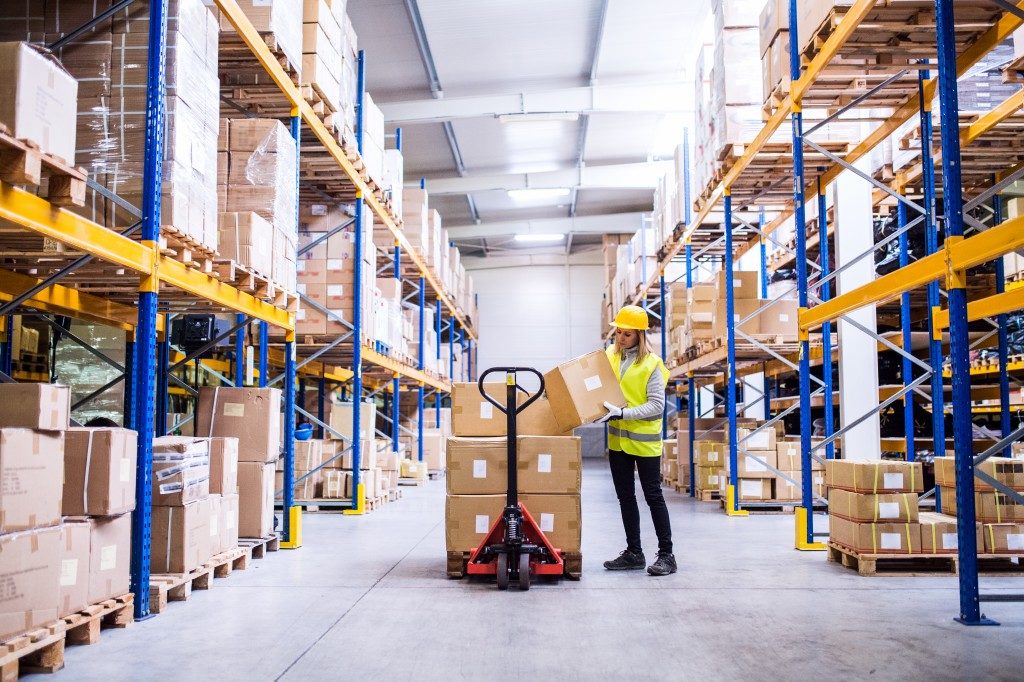There are roughly 915,000 warehousing and storage employees in the US as of 2016, and approximately 17,300 warehouses operating in the US as of 2017. For every 100 workers in the warehouse or storage industry, five get injured due to workplace accidents. Fortunately, this statistic is significantly lower than in construction sites or factories, but these workplace accidents still do happen. So to make sure that your warehouse avoids these accidents from happening, it’s essential to know the common accidents that occur in warehouses and could potentially injure your workers:
Pallet Rack Collapse
Improper stacking of pallets or use of poorly maintained pallets can cause them to collapse and hurt nearby workers as well as damage goods in the vicinity. Pallet racks stored at higher levels such as high shelves or mezzanines can be a potential projectilehazards. So make sure that your workers properly store and secure pallets. Additionally, workers should also be wary about the vertical stacking or goods and always ensure that the heavier items are stored at the bottom, as well as to pay extra attention to the balancing and positioning for products to avoid them from tipping over.
Falling, Tripping, and Slipping
In all industries and commercial establishments, slips, tips, and falls make up the majority of accidents. As such, it’s important that your warehouse is well-kept and properly constructed. Any spilled liquids should be cleaned up immediately to prevent slippage. Mezzanines and other elevated platforms where employees traverse or work should have proper railings to prevent falling. And your floor elevation, as well as your warehouse stairs, should follow industrial safety standards to prevent employees from tripping due to poor elevation planning. Clutters and small boxes and items could also be tripping hazards in your warehouse.
Incidents Involving Hazardous Materials
Warehouses that store or deal with companies that use volatile or caustic substances should take extra precaution when dealing with hazardous materials. Your workers and warehouse supervisors should watch out for leaks coming from containers of hazardous materials. It’s important that your warehouse is properly equipped and has hazmat plans in case of any incidents involving these substances.
Forklift Incidents

Forklift-related incidents range from taking the wrong turn, poor communication between workers, lack of training, or simple negligence. As such, it’s important to keep constant communication in the workforce so employees can be warned if forklifts are operating or moving towards a particular area. Employees operating forklifts should also be properly trained and monitored to avoid and minimize future incidents.
Muscle Injuries and Overexertion
One of the most common causes of injuries in storage and warehouse industries are overexertion and improper manual lifting and handling. Lifting heavy equipment or stocks with poor posture can lead to debilitating back injuries. Repetitive motion, as well as over-exertion, can also cause an employee to take a few days off to heal and recuperate. So it’s important for your employees to be trained on how to lift manually, and to have them use the proper machinery or equipment such as handcarts or forklifts instead of lifting heavy goods with just their hands.
Conclusion
Although warehouses aren’t as accident prone as construction sites or factories, the potential risks and hazards are still quite possible. It’s important for you to take note of these potential hazards and to remember and implement these simple safety tips in your company’s warehouse to prevent any future accidents and injuries.

